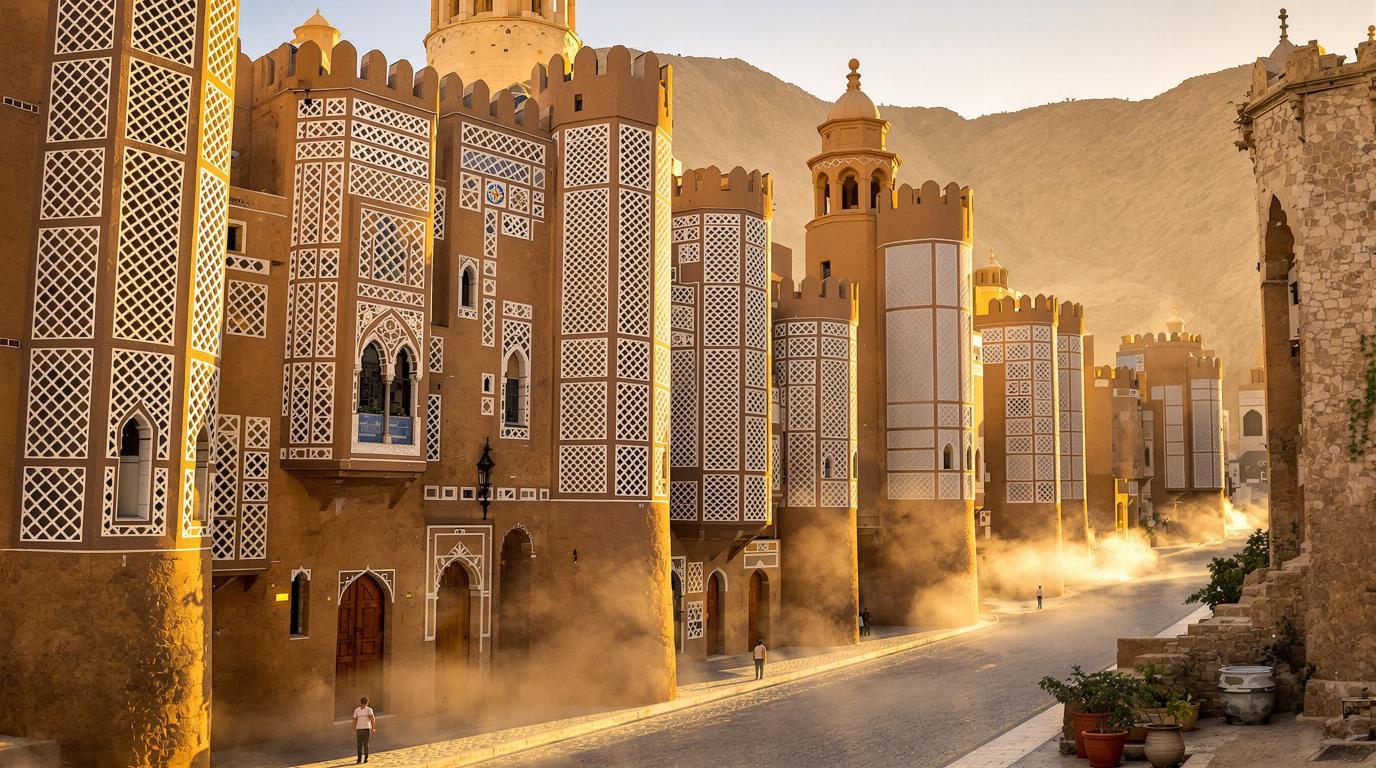Yemen’s ancient jewel, Sana’a, stands as one of the world’s oldest continuously inhabited cities, with its extraordinary tower-houses creating a skyline that has captivated travelers for centuries. This UNESCO World Heritage Site in the Amanat Al Asimah Governorate represents an architectural marvel that has survived over 2,500 years of history, despite being located in one of the world’s most challenging regions to visit.
A living museum of Islamic architecture
Walking through Sana’a’s Old City feels like stepping into an architectural time capsule. Over 6,000 tower-houses, most constructed before the 11th century, rise five to eight stories high, creating what many have described as “the Manhattan of the desert.” These rammed earth structures feature distinctive white trim and intricate geometric patterns that seem to dance across the facades.
“Sana’a’s architecture isn’t just about buildings; it’s about the resilience of cultural identity. These tower-houses have withstood not just centuries but cultural shifts and conflicts,” explains Dr. Ahmed Al-Sabahi, a Yemeni architectural historian.
The geometric poetry of tower-houses
What makes Sana’a’s skyline truly unique is the elaborate decorative elements adorning these ancient skyscrapers. Qamariya windows – crescent-shaped stained glass inserts – filter sunlight into spectacular rainbow patterns across interior spaces. Meanwhile, exterior walls showcase white gypsum designs against earthen backgrounds, creating a visual rhythm that’s instantly recognizable.
These architectural wonders bear similarity to the wooden sailing vessels still crafted by hand in this Zanzibar village that has maintained shipbuilding traditions for 500 years, demonstrating how isolated cultures preserve their craftsmanship across generations.
Sacred spaces that shaped Islamic history
Sana’a became a major Islamic center in the 7th century, and its religious heritage remains palpable today. The Great Mosque (Al-Jami’ al-Kabir), considered the first mosque built outside Mecca and Medina, stands as a testament to the city’s spiritual significance, its stone minarets watching over the bustling streets below.
Markets that preserve ancient commerce
The city’s vibrant souks offer a glimpse into traditional Yemeni life. The Salt Market bustles with vendors selling everything from spices to handcrafted jewelry, while the afternoon ritual of qat chewing brings locals together in social communion, a tradition as old as the city itself.
“Our markets are living institutions, not tourist attractions. The same families have occupied these stalls for generations,” notes Fatima Al-Saidi, a local merchant.
A precarious heritage under threat
Like this medieval French village clinging to a 120-meter cliff face, Sana’a exists in a state of beautiful fragility. Political instability and conflict have placed this irreplaceable heritage at risk, with UNESCO implementing emergency measures to protect the site’s cultural treasures.
Dawn’s golden embrace
Photographers seeking to capture Sana’a’s essence should arrive at first light, when morning mist clings to the base of tower-houses and golden sunlight gradually illuminates the ancient city. This magical moment rivals even the smoke that thunders at this African waterfall for sheer visual drama.
Beyond the guidebook
Venture to Al-Qasr Quarter’s roof terraces for panoramic views unmentioned in travel guides, or seek out the tiny Al-Mu’ayyad Mosque behind the Great Mosque’s eastern arcades, where Ottoman-era tilework tells stories of cultural exchange. Like this Scottish island that confuses compasses, Sana’a holds secrets that defy conventional navigation.
A timeless urban experiment
Sana’a’s Old City represents one of history’s most successful urban planning models, with narrow, winding streets creating natural air conditioning and fortress-like protection. This ancient wisdom rivals modern sustainability efforts, similar to this Greek island that banned cars since 1956.
Though current conflicts make visiting challenging, Sana’a remains a testament to human ingenuity and cultural perseverance. Its tower-houses stand not merely as architectural marvels but as monuments to a civilization that understood sustainability, community, and beauty long before these became modern buzzwords. In their earthen symmetry and delicate decoration, they whisper secrets of a world we’ve nearly forgotten – one worth protecting at all costs.
